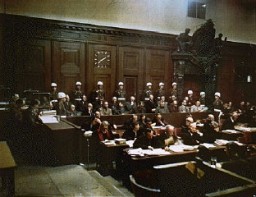You searched for: 海外基金理财源码定制开发【TG���������@EK7676】平台包网搭建海外基金理财源码定制开发【TG���������@EK7676】平台包网搭建3C6zYDu9c5
<< Previous | Displaying results 1-50 of 274 for "海外基金理财源码定制开发【TG���������@EK7676】平台包网搭建海外基金理财源码定制开发【TG���������@EK7676】平台包网搭建3C6zYDu9c5" | Next >>
-
Subsequent Nuremberg Proceedings, Case #3: The Justice Case
ArticleThe Justice Case was Case #3 of 12 Subsequent Nuremberg Proceedings against leading German industrialists, military figures, SS perpetrators, and others.
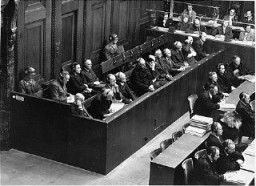
-

-
Page 3 of International Military Tribunal program
ArtifactThird page of a list of defendants at the International Military Tribunal at Nuremberg. This material appears in a mimeographed program booklet distributed at the IMT. This page includes: Julius Streicher, Wilhelm Keitel, Walter Funk, and Hjalmar Schacht., along with brief biographical information for each.
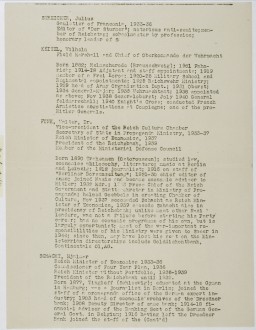
-
Page from volume 3 of a set of scrapbooks documenting the German occupation of Denmark
ArtifactPage from volume 3 of a set of scrapbooks compiled by Bjorn Sibbern, a Danish policeman and resistance member, documenting the German occupation of Denmark. Bjorn's wife Tove was also active in the Danish resistance. After World War II, Bjorn and Tove moved to Canada and later settled in California, where Bjorn compiled five scrapbooks dedicated to the Sibbern's daughter, Lisa. The books are fully annotated in English and contain photographs, documents and three-dimensional artifacts documenting all…

-
Book burning in Berlin
PhotoCrowds gather at Berlin's Opernplatz (opera square) for the burning of books deemed "un-German." Berlin, Germany, May 10, 1933.
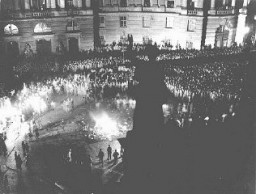
-
Liberation of Buchenwald
FilmThe US army filmed the weak and emaciated survivors of the Buchenwald concentration camp in Germany to document Nazi crimes against humanity. This film was shot shortly after the liberation of the camp in April 1945.
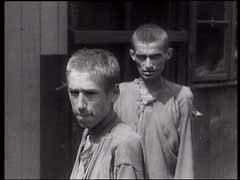
-
The Times, August 17, 1921
ArtifactIn this London Times article, reporter Philip Graves compared passages from Maurice Joly’s Dialogue in Hell Between Machiavelli and Montesquieu (1864) side-by-side with the Protocols of the Elders of Zion in order to prove that the Protocols was plagiarized. Other investigations revealed that one chapter of a Prussian novel, Hermann Goedsche’s Biarritz (1868), also “inspired” the Protocols. Times (London), August 17, 1921.
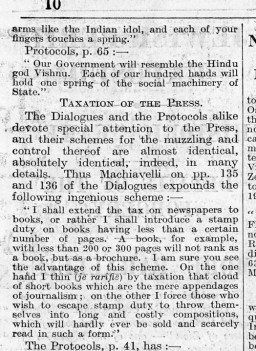
-
Demonstrating the operation of the Dachau crematorium
PhotoSurvivors of the Dachau concentration camp demonstrate the operation of the crematorium by pushing a corpse into one of the ovens. Dachau, Germany, April 29–May 10, 1945. This image is among the commonly reproduced and distributed, and often extremely graphic, images of liberation. These photographs provided powerful documentation of the crimes of the Nazi era.
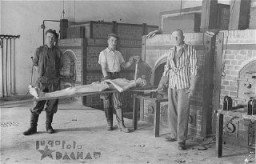
-
Deportation from the Warsaw ghetto
PhotoDeportation of Jews from the Warsaw ghetto during the uprising. This photo was taken secretly from a building adjacent to the ghetto by a Polish member of the resistance. Warsaw, Poland, April 1943.
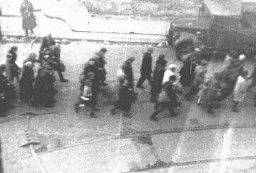
-
Edward Vebell courtroom sketch
ArtifactCourtroom sketch drawn during the International Military Tribunal by American artist Edward Vebell. The drawing depicts defendants Rudolf Hess and Wilhelm Keitel, with this accompanying text: "Hess looked very hollow cheeked and thin necked. He seemed to ignore the proceedings and kept his head down, absorbed in a book. Keitel tried to retain a rigid military bearing and strike haughty poses." Nuremberg, Germany, 1945.
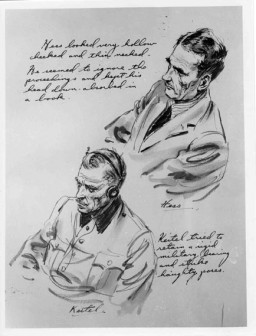
-
Construction of Oskar Schindler's armaments factory in Bruennlitz
PhotoView during the construction of Oskar Schindler's armaments factory in Bruennlitz. This photograph shows the construction of a rail line to the factory. Czechoslovakia, October 1944.
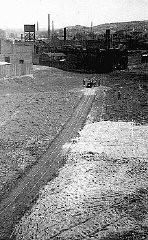
-
Matchbox cover with Japanese propaganda illustration
ArtifactDuring the war the Japanese flooded Shanghai with anti-American and anti-British propaganda, including this image from a matchbox cover. It depicts United States President Franklin D. Roosevelt--dressed in rags, on a raft in the ocean, and holding onto the U.S. flag--in the view of a Japanese submarine periscope. Shanghai, China, between 1943 and 1945. [From the USHMM special exhibition Flight and Rescue.]
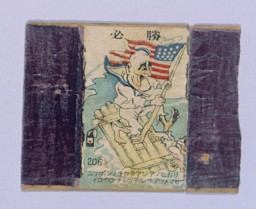
-
View of Rotterdam after German bombing in May 1940
PhotoView of Rotterdam after bombing by the German Luftwaffe in May 1940. Rotterdam, the Netherlands, 1940.
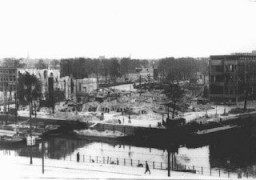
-
Lublin/Majdanek Concentration Camp: Areas of Research
ArticleLearn about areas of research related to the number of deaths at the Lublin/Majdanek concentration camp system.
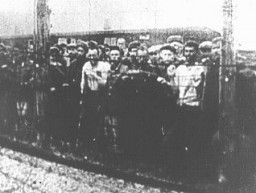
-
International Military Tribunal: The Defendants
ArticleListing of the 24 leading Nazi officials indicted at the International Military Tribunal at Nuremberg. Learn about the defendants and the charges against them.

-
Nuremberg Race Laws
ArticleLearn more about the Reich Citizenship Law and the Law for the Protection of German Blood and German Honor, collectively known as the Nuremberg Race Laws.
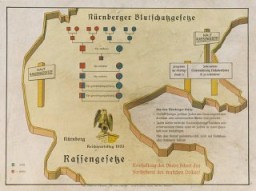
-
Operation "Harvest Festival"
ArticleLearn about Operation “Harvest Festival” (Aktion “Erntefest”), the Nazi attack against the remaining Jews of the Lublin District of the General Government.
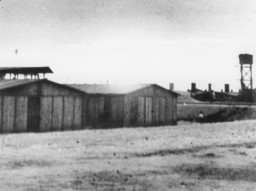
-
The 99th Infantry Division during World War II
ArticleThe 99th Infantry Division participated in major WWII campaigns and is recognized for liberating subcamps of the Dachau concentration camp in 1945.
-

-
Zivia Lubetkin Zuckerman testifies
PhotoWitness Zivia Lubetkin Zuckerman testifies during the trial of Adolf Eichmann. Jerusalem, Israel. May 3, 1961.
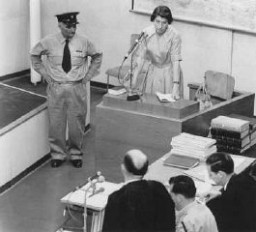
-
German troops arrive in Norway
PhotoGerman troops arriving in Norway by ship prepare for landing during the German invasion of Norway. May 3, 1940.

-
German troops entering Norway
PhotoGerman troops disembarking from a troop transport during the German invasion of Norway. May 3, 1940.
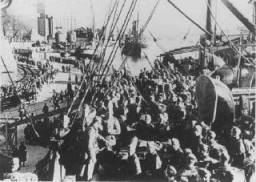
-
German troops and planes in Norway
PhotoGerman troops and planes on an improvised airfield during the battle for Norway, May 3, 1940.
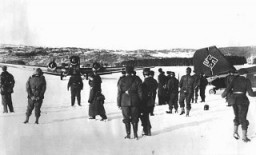
-
Hitler addresses German troopsin Eger
PhotoHitler addresses German troops at the market square in Eger, during the German occupation of Czechoslovakia's Sudetenland region. October 3, 1938.
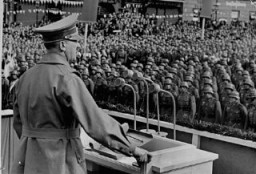
-
Prisoners' barracks in Dachau
PhotoView of prisoners' barracks soon after the liberation of the Dachau concentration camp. Dachau, Germany, May 3, 1945.
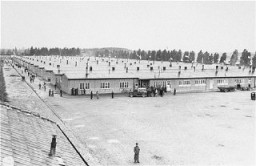
-
The Murder of People with Disabilities
ArticleAt the beginning of WWII, people with mental or physical disabilities were targeted for murder in what the Nazis called the T-4, or "euthanasia," program.
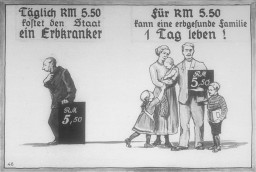
-
The Boycott of Jewish Businesses
Media EssayOn April 1, 1933—less than 3 months after rising to power—the Nazis staged a nationwide boycott of Jewish businesses. The boycott signaled the start of the Nazi movement to exclude Jews from all aspects of German soci...
-
New York Times article
ArtifactA March 3, 1967, New York Times article about Simon Wiesenthal entitled, "Relentless Nazi-Hunter."
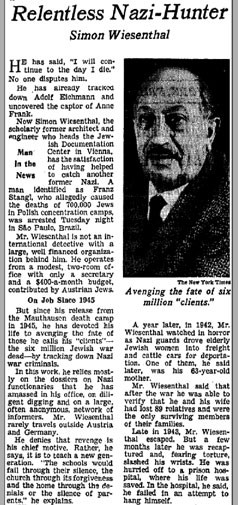
-
We Will Never Die, program cover, 1943
ArtifactThe program cover for "We Will Never Die" featured Arthur Szyk’s "Tears of Rage" artwork. The cover's original dimensions are: 12 1/16" x 9 1/16" x 3/16.
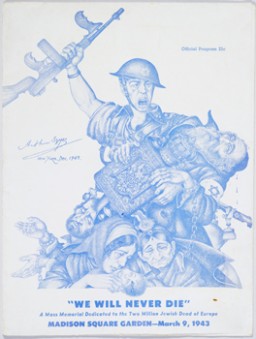
-
A notice announcing a meeting about boycotting the Olympics
PhotoA pedestrian reads a notice announcing an upcoming public meeting, scheduled for Tuesday, December 3, to urge Americans to boycott the upcoming 1936 Berlin Olympics. New York, United States, 1935.

-
Jesse Owens and other Olympic athletes compete
PhotoAmerican Olympic runner Jesse Owens and other Olympic athletes compete in the twelfth heat of the first trial of the 100m dash. Berlin, Germany, August 3, 1936.
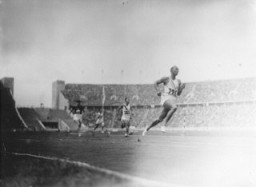
-
Passport stamped with "J" for "Jude"
PhotoPassport issued to Lore Oppenheimer, a German Jew, with "J" for "Jude" stamped on the card. "Sara" was added to the names of all German Jewish women. Hildesheim, Germany, July 3, 1939.
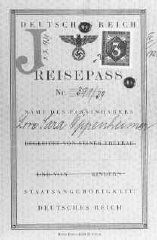
-
German troops march into the town square of Friedland
PhotoIn the aftermath of the Munich agreement, which turned the Sudetenland area of Czechoslovakia over to Germany, German troops march into the town square of Friedland. October 3, 1938.
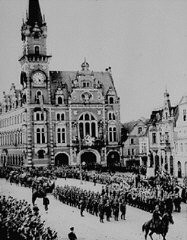
-
A Norwegian town burns after a German bombing mission
PhotoThe Norwegian town of Elverum, near the Swedish border, burns after a German bombing mission during the invasion of Norway. Elverum, Norway, May 3, 1940.
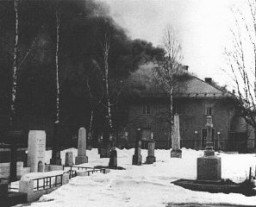
-
Building damaged following the German invasion of Norway
PhotoThis building in the town of Elverum, near Oslo, was damaged during a bombing raid following the German invasion of Norway. Elverum, Norway, May 3, 1940.
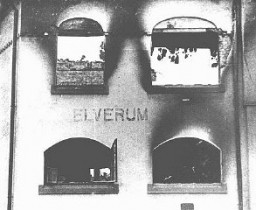
-
Arriving in New York
PhotoA group of German and Austrian Jewish refugee children arrives in New York on board the SS President Harding. New York, United States, June 3, 1939.

-
Hitler tours the Sudetenland
PhotoHitler during a triumphal tour of the Sudetenland following the Munich agreement of September 1938. The agreement ceded the largely German-speaking Sudeten region of Czechoslovakia to Germany. Eger, Czechoslovakia, October 3, 1938.
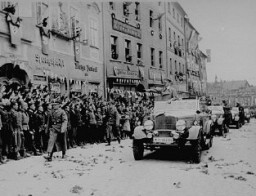
-
Group portrait of former Bielski partisans
PhotoGroup portrait of former Bielski partisans from Nowogrodek taken in the Foehrenwald displaced persons camp. Germany, April 3, 1948.
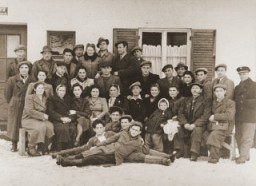
-
Refugees aboard the St. Louis
PhotoRefugees aboard the St. Louis wait to hear whether Cuba will grant them entry. Off the coast of Havana, Cuba, June 3, 1939.
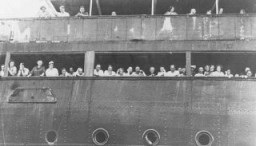
-
German women at work in the offices of the German Census Bureau
PhotoGerman women at work in the offices of the German Census Bureau. The board gives directions for tabulation: the center column instructs that number 3 is the indicator to be used for Jews. Germany, 1933.
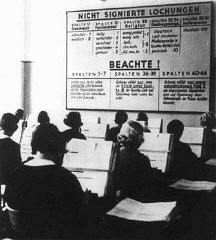
-
Aerial photograph showing gas chambers and crematoria at Auschwitz-Birkenau
PhotoAerial photograph showing the gas chambers and crematoria 2 and 3 at the Auschwitz-Birkenau (Auschwitz II) killing center. Auschwitz, Poland, August 25, 1944.

-
The defendants in the dock during the Justice Case
PhotoThe defendants in the dock during the Justice Case, Case #3 of the Subsequent Nuremberg Proceedings. Nuremberg, Germany, 1947.

-
Regina upon her high school graduation
PhotoRegina upon graduation from Thomas Jefferson High School in Brooklyn, New York, February 3, 1949.
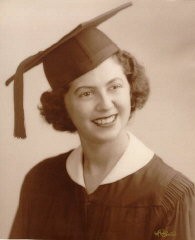
-
Regina and Victor Gelb celebrate their 50th wedding anniversary
PhotoRegina and Victor celebrate their 50th wedding anniversary. New York City, May 3, 2003.
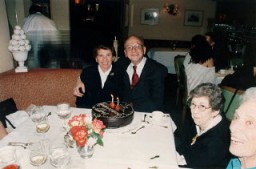
-
Lublin/Majdanek Concentration Camp: Conditions
ArticleIn 1940, the Nazis established Lublin (Majdanek) concentration camp in Lublin, Poland. Learn more about camp conditions.
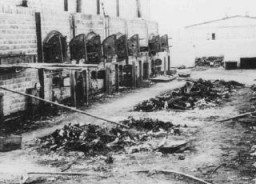
-
Advertisement for the Violetta women's club
DocumentA newspaper advertisement for the Damenklub Violetta, a Berlin club frequented by lesbians, 1928. Before the Nazis came to power in 1933, lesbian communities and networks flourished in Germany.
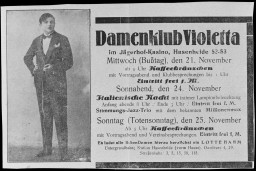
-
Lublin/Majdanek: Key Dates
ArticleExplore a timeline of key events in the history of the Lublin/Majdanek camp in German-occupied Poland.
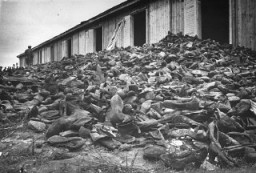
-
Reichstag Fire Decree
ArticleThe Reichstag Fire Decree of February 1933 restricted individual freedoms, and allowed Hitler's government to overrule state and local laws and overthrow state and local governments.
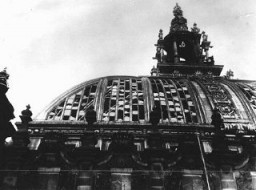
-
Decree against Public Enemies
ArticleThe Decree against Public Enemies was a key step in the process by which the Nazi leadership moved Germany from a democracy to a dictatorship.
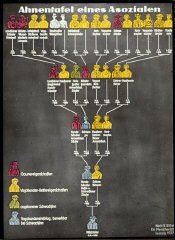
-
Nuremberg Trials
ArticleTrials of top surviving German leaders for Nazi Germany’s crimes began in Nuremberg after World War II. Read about the Nuremberg trials.
